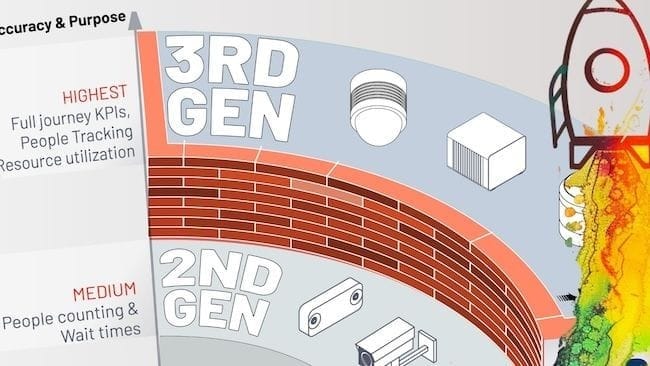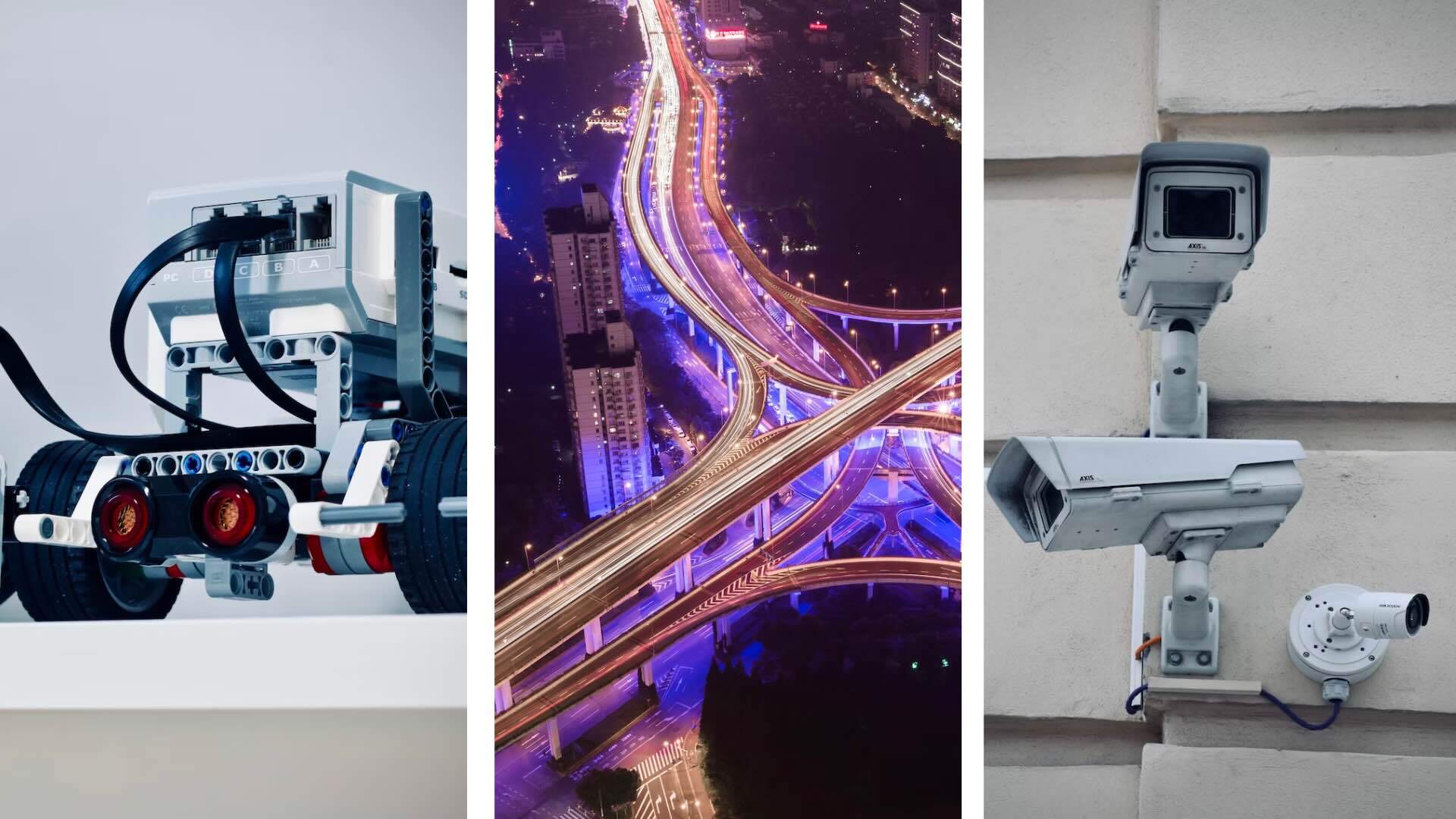
Streamlining Airport Checkpoints with LiDAR and Spatial Intelligence
LiDAR technology is revolutionizing airport checkpoints by enhancing passenger flow monitoring, reducing wait times, and improving overall security and experience. This innovative approach ensures airports operate with greater efficiency and responsiveness to traveler needs.
Table of Contents
- Introduction
- Understanding the Friction at Airport Checkpoints
- What is LiDAR and How Does It Work?
- The Role of LiDAR in Enhancing Airport Operations
- Case Studies: Successful Implementation of LiDAR at Major Airports
- Future Trends in Airport Security and Passenger Experience
- Conclusion
Introduction
Airports are bustling hubs of activity, with millions of passengers traveling through every year. Yet, one of the most persistent issues affecting these facilities is the friction at security and check-in checkpoints. This operational bottleneck can lead to long wait times, increased traveler frustration, and significant revenue losses for airlines and airports alike.

By utilizing advanced technologies like LiDAR, airports can gain a real-time understanding of people flow monitoring, enabling them to optimize operations for better efficiency and enhanced security. This innovative approach not only helps to reduce delays but also creates a more pleasant environment for passengers.
Understanding the Friction at Airport Checkpoints
The pressure on airports to process large volumes of passengers quickly and efficiently continues to increase. Security checkpoints are often the most criticized aspect of air travel, with passengers facing unpredictable delays that can set the tone for their overall travel experience.
Traditional methods of managing these checkpoints often fall short, relying on outdated technologies such as cameras and Wi-Fi signals which do not provide the necessary depth of information.
These limitations include:
- Inability to accurately track passenger flows.
- Limited data on crowd density leading to stagnated bottlenecks.
- Challenges in adjusting staffing levels in real-time based on demand.

With LiDAR technology, airports can transform their approach by harnessing detailed spatial data to monitor the movement of travelers in real time. This allows staff to dynamically adjust resources and improve the passenger journey significantly.
What is LiDAR and How Does It Work?
Light Detection and Ranging (LiDAR) is a sophisticated remote sensing technology that utilizes laser light to measure distances and create precise 3D models of environments. In the context of airport operations, LiDAR systems can generate an accurate representation of passenger flows within security checkpoints and other critical areas.
LiDAR offers several advantages over traditional monitoring systems:
- High Accuracy: LiDAR provides detailed and precise measurements of passenger movements, making it far superior to conventional camera systems that may misinterpret data.
- Robust Data Collection: Unlike Wi-Fi, which can struggle in crowded settings, LiDAR can effectively gather data even in complex environments.
- Real-time Analytics: The capability to analyze data in real-time allows for immediate adjustments to be made, essential for active passenger flow management.
- Privacy Respect: LiDAR relies on volumetric data collection rather than facial recognition, thereby ensuring a high level of privacy for passengers.

Airports employing LiDAR solutions, such as those from Outsight, are setting a new precedent in enhancing security effectiveness while ensuring a smooth passenger experience.
The Role of LiDAR in Enhancing Airport Operations
LiDAR empowers airport operators to monitor and manage passenger flows with remarkable precision. By gaining a clearer view of passenger behavior and movement patterns, airports can implement several impactful changes.
One critical use of LiDAR is its ability to optimize staffing levels dynamically:
- By analyzing real-time data, airports can open or close checkpoints based on current passenger demand, effectively reducing overcrowding during peak times.
- Adjustments to staff deployment can be made on the fly, improving efficiency without overstaffing during quieter periods.
Additionally, LiDAR enhances the safety measures in place by identifying congestion and potential security threats early on.
- Early detection of bottlenecks allows security personnel to intervene proactively, maintaining a higher level of safety throughout the airport.
Moreover, the technology aids in passenger experience improvements by reducing waiting times and creating a more user-friendly environment.

This strategic shift towards employing modern solutions like LiDAR underscores a commitment to both security and efficiency that modern travelers have come to expect.
Case Studies: Successful Implementation of LiDAR at Major Airports
Several airports have already realized the benefits of LiDAR technology, showcasing its transformative potential.
Paris Charles de Gaulle Airport
One of the most prominent examples is Paris Charles de Gaulle Airport, which has integrated LiDAR solutions into its operations. By utilizing Outsight's 3D LiDAR systems, the airport has significantly improved its passenger flow management.
- The deployment has led to a marked reduction in wait times and enhanced service delivery in security areas.

Data collected through LiDAR has facilitated better decision-making at all levels of the airport's operations.
Orly Airport
At Orly Airport, LiDAR technology has also found a critical place in enhancing airport checkpoint efficiency. The real-time data gathered has empowered the operational staff to fine-tune their approach to managing security and check-in processes.
- Passenger satisfaction has risen as lines have shorted, ensuring a smoother transition through security.
- The airport's ability to adapt to fluctuating passenger volumes has positioned Orly as a model for efficient airport operations.

Implementing LiDAR significantly boosts both efficiency and security, thereby fostering an altogether smoother passenger experience.
Future Trends in Airport Security and Passenger Experience
As air travel continues to evolve, the role of advanced technology, such as LiDAR, is expected to expand. The future of airport operations will likely see an increased emphasis on data-driven strategies aimed at improving both security measures and passenger experience.
- Other airports around the world will begin to adopt similar LiDAR implementations, further demonstrating the efficacy of spatial intelligence in the airline industry.
- The continued development of complementary technologies will also play a crucial role in refining the on-ground processes in airports.
- The aviation sector will increasingly leverage data analytics for predictive modeling, enabling proactive responses to anticipated demand fluctuations.
- Enhanced integration of AI with LiDAR systems will enable smarter and more responsive airport environments.
With a commitment to embracing cutting-edge technology, airports can significantly reduce friction points while paving the way for a new era in airline travel.
Conclusion
In conclusion, the role of LiDAR and spatial intelligence in transforming airport checkpoints is monumental. By addressing friction and optimizing operations, airports can enhance passenger experience while maintaining a high level of security.
As more airports adopt these innovative technologies, the aviation industry is set to achieve new heights in operational excellence and customer satisfaction. With leading solutions like those offered by Outsight, the future looks promising for airports willing to embrace this paradigm shift toward smarter, data-driven operations.
LiDAR INSIGHTER Newsletter
Join the newsletter to receive the latest updates in your inbox.






